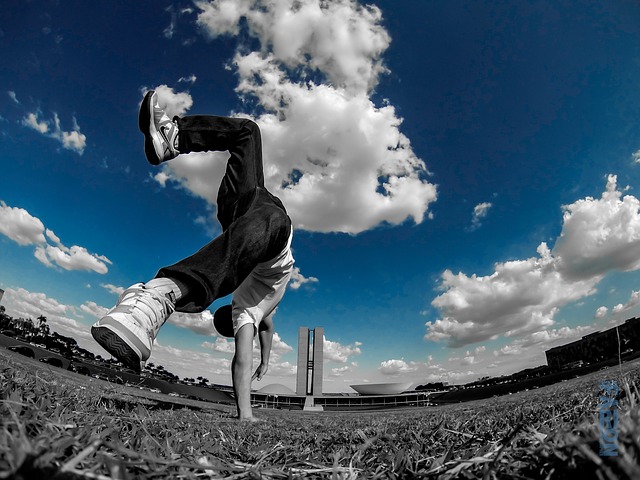Archive for July 2021
How We Help Athletes Stay Ahead of Injuries
What defines a high-impact sport?
Even running can be considered high impact. From a chiropractic perspective, “high-impact” refers to any sport that causes excessive shock to the joints of the body. Sports such as football, rugby, and even basketball and soccer put athletes at risk for injuries including sprains and strains, ligament injury, and damage to the neck and spine. Are you one of these athletes? Read on to find out how we protect your body against the dangers of your sport.
Adding an extra layer of support to your joints
While high-impact sports help your body build stronger joints and stronger tissue to surround them, it is important to give them an extra layer of protection and support; that extra layer comes from chiropractic. Through chiropractic adjustment and other hands-on modalities, we help high-impact athletes maintain the strength and mobility of the joints and muscles that are used most.
When it comes to injured joints, chiropractors apply a manual force to restore joint mobility and increase circulation to damaged tissues which may be contributing to the loss of motion. Chiropractic treatment reduces inflammation and pain and facilitates the healing process.
Keep moving your best with chiropractic care
Athletes will benefit from the chiropractic care provided at our office because we are experts in musculoskeletal form. We keep your nervous system free of interference and ensure the proper alignment of your spine to keep your body ahead of potential injuries. If you are interested in adding an extra layer of protection and optimization to your athletic repertoire, give our office a call to schedule an appointment today.
Leave Back Pain out of your Sleep Life
Sleep and chronic back pain don’t mix
And while chronic back pain obviously prevents people from sleeping, the lack of sleep feeds back into chronic pain by heightening stress levels and preventing the body from getting the rest it needs to fortify itself against chronic pain in the first place. Once chronic pain starts to invade on your sleep life, it can feel like there is nowhere left to go.
Finding a way to sleep with chronic back pain
Chiropractic is an art of problem solving. Where more traditional treatment methods fail, chiropractic looks deeper, asks questions, and demands answers of your musculoskeletal form: what exactly is causing your chronic pain? We believe that the most powerful way to change your relationship with sleep and chronic pain is to manage it naturally. And while it may take more work than using opioids to manage pain, or sleep-inducing drugs to find sleep despite the pain, we believe that between chiropractic treatment and lifestyle adjustments you can find serious pain relief and the sleep you need. The upside is greater and the list of side-effects is much smaller.
Chiropractic to help you sleep with chronic pain
Our modalities, whether it be spinal adjustment, decompression therapy, massage or trigger point release, help our patients experience a dramatic reduction in pain and an improvement in range of motion. Many of our patients report that they have had their best nights’ sleep in memory, purely on the strength of one visit. Imagine how you can feel with consistent chiropractic treatment, combined with lifestyle adjustments including managing your diet and sleep environment? The potential is great; if you are interested in sleeping better today, give our office a call to schedule an appointment.
Chiropractic for Joint Pain Conditions
Chronic joint pain is a drain on quality of life
Joints are the workhorses of the human body; they are the structures where bone meets bone, providing the functions of range of motion and shock absorption. As an office of chiropractic, a set of joints we treat on a regular basis are the facet joints. Facet joints, of which there are two in every spinal motion segment, allow for stable articulation between the vertebrae. They are small and, because they are so often used, they are frequently injured.
Facet Joint Syndrome is a common cause of back pain
Each facet joint is encased in a joint capsule filled with synovial fluid, the lubricating material that contributes to joint health. This capsule is covered by hyaline cartilage and the overall role of the entire structure is to stabilize the spine- to prevent damage from occurring due to excessive motion. When damage occurs to the joint capsule, whether due to acute injury or repetitive trauma, back pain, swelling and inflammation is a natural result. Most instances of FJS will heal themselves within a 6 week time period, but chiropractic helps to empower your body to heal quicker and prevent the injury from recurring.
Chiropractic is effective at healing Facet Joint Syndrome
A chiropractic examination can determine whether your back pain may be caused by FJS. If so, we proceed with a dynamic plan for treatment including conservative methods for empowering your body’s ability to heal. These include:
- Chiropractic adjustment to align the spine and re-hydrate the facet joints.
- Lifestyle adjustments to account for your injury.
- Decompression therapy including manual and instrument-assisted traction to open up space between the vertebrae.
- Advice on posture and diet to help support the healing process.
If you suspect you may be suffering from Facet Joint Syndrome, give our office a call to schedule an appointment and speed up the healing process today.
What Behavior is Causing your Muscle Tension?
Muscle tension often flies under the radar
At our office in Houston, we define muscle tension as a condition where muscles in the body remain contracted or semi-contracted for an extended period of time. We also regularly see the damaging effects of prolonged muscle tension: the aches, pains, headaches, and stiffness that often accumulate into episodic back pain. But what causes muscle tension?
Behavior that is contributing to muscle tension
- Stress: the body tightens in response to stress; blood flow to soft tissues is reduced which means oxygen is reduced, and biochemical waste is allowed to build in the muscles, leading to tension, spasm, and pain.
- Poor posture: good posture means your spine is balanced with muscles working in harmony; poor posture means that your spine is unbalanced and your muscles must compensate to keep it upright. Some muscles are constantly contracted while others are not used at all.
- Lack of exercise: more exercise means more oxygen to your muscles and the prevention of lactic acid build-up. When muscles are not stretched regularly, they become short and trigger points are likely to develop
- Lack of certain nutrients: calcium, magnesium, and B12
- …and too much of others: caffeine, phosphorous.
- Sleep health: lack of sleep deprives you of oxygen and prevents the breakdown of lactic acid which contributes to trigger points.
We can reduce muscle tension
Muscle tension is widespread; it is one of the most common causes of muscle ache and pain. We use chiropractic techniques to restore proper alignment to the spine and regulate the nervous system. This in itself is a big boost, but our treatment goes further by helping you identify behaviors that are contributing to your muscle tension; we help you find ways to stay relaxed, both in body and mind, throughout the day. If you are interested in a life with less muscle tension, give our office a call to schedule an appointment today.
Spinal Stability: Why is it so Important?
The importance of core stability
You may as well equate core stability with spinal stability. Core muscles refer to the network of muscles in your stomach and back which combine to support your spine, maintain stability and prevent injury. Weakness in these muscles is a signal contributor to not only back pain, but the development of poor posture and debilitating spinal conditions such as herniated discs. Boiled down to its most basic, a strong core will support your spine and allow you to perform thousands of daily motions without incurring injury. Let’s take a look at one of the most important core muscles.
The multifidus: small but mighty when it comes to core stability
The multifidus is a series of muscles that attach directly to the spinal column- there is a superficial group and a deep muscle group which perform several key functions; the key roles of the multifidus muscles include taking pressure off the intervertebral discs, keeping the spine straight and supported. Before any motion is initiated, the multifidus activates in order to protect the spine from injury. People with back pain often present with smaller and thus weaker multifidus muscles, which means their ability to protect the spine is reduced. The key takeaway here is that a weak multifidus contributes to a lack of core stability and leaves people more vulnerable to back injury.
Establishing core stability
There are stretches and strengthening exercises that can specifically target the multifidus to restore strength to this small but powerful muscle. Before starting any routine that involves core and thus spinal stability, it is worth consulting with a health professional. We offer expertise on the subject of core stability and chiropractic adjustment which ensures your spine is properly aligned in order to reap all the benefits of your exercise. Give our office a call to schedule an appointment today.





